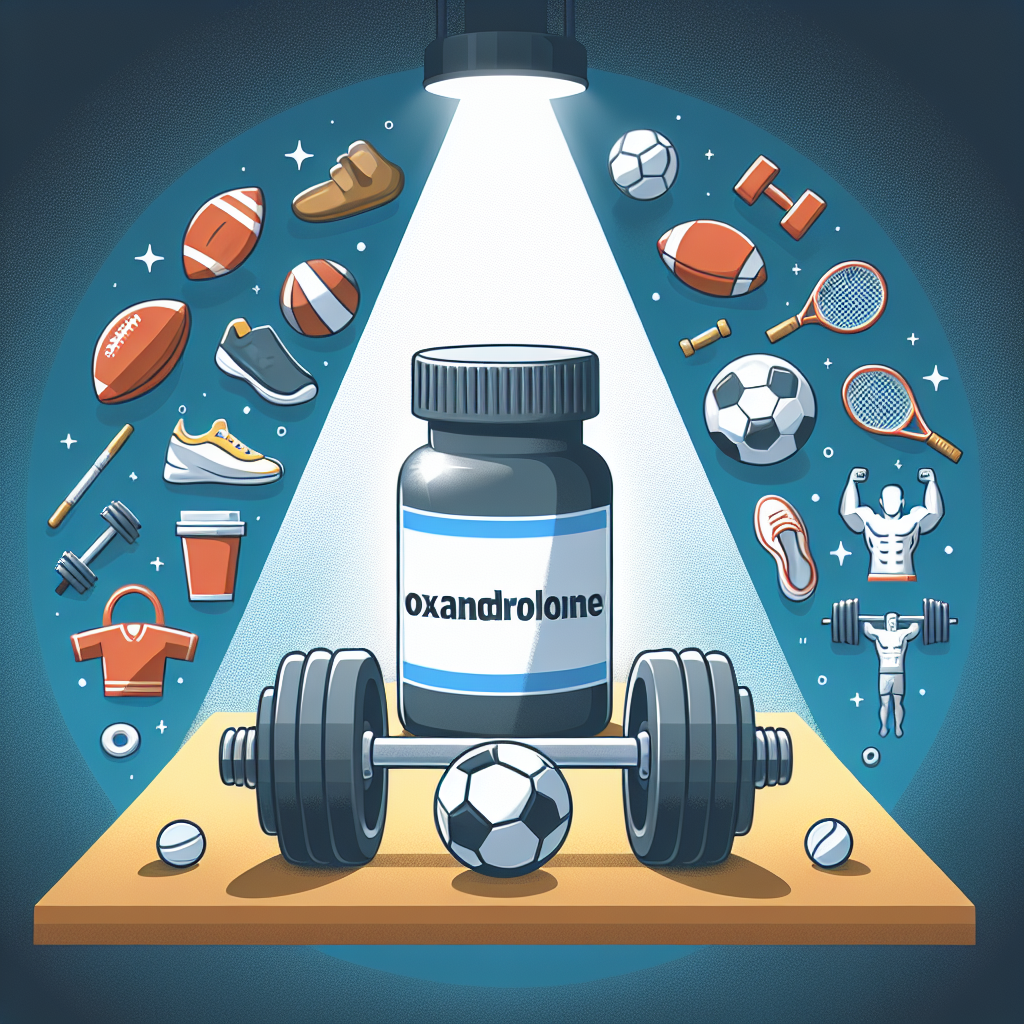-
Table of Contents
Oxandrolone: A Controversial Supplement in the Sports World
Oxandrolone, also known by its brand name Anavar, is a synthetic anabolic-androgenic steroid (AAS) that has gained popularity in the sports world for its potential performance-enhancing effects. However, its use has also been met with controversy and scrutiny due to its potential side effects and misuse by athletes. In this article, we will delve into the pharmacology of oxandrolone, its potential benefits and risks, and the current state of its use in the sports world.
The Pharmacology of Oxandrolone
Oxandrolone is a modified form of dihydrotestosterone (DHT), a naturally occurring androgen hormone in the body. It was first developed in the 1960s by pharmaceutical company Searle under the brand name Anavar for medical use in treating muscle wasting diseases, osteoporosis, and other conditions that cause weight loss. However, due to its anabolic properties, it soon caught the attention of athletes and bodybuilders as a potential performance-enhancing drug.
Like other AAS, oxandrolone works by binding to androgen receptors in the body, which then stimulates protein synthesis and muscle growth. It also has a low androgenic effect, meaning it has a lower potential for causing masculinizing side effects such as hair loss and deepening of the voice. This makes it a popular choice among female athletes.
Oxandrolone is available in oral form and has a relatively long half-life of approximately 9 hours. This means that it can stay in the body for a longer period, allowing for less frequent dosing compared to other AAS. However, it is still detectable in urine for up to 3 weeks after use, making it a banned substance in most sports organizations.
Potential Benefits of Oxandrolone in Sports
The use of oxandrolone in sports is primarily for its potential performance-enhancing effects. Some studies have shown that it can increase muscle mass and strength, improve athletic performance, and aid in recovery from intense training. It has also been reported to have a positive effect on bone density, making it beneficial for athletes at risk of bone injuries.
In a study by Demling et al. (2004), oxandrolone was found to significantly increase lean body mass and muscle strength in burn patients, suggesting its potential for muscle building and recovery. Another study by Forbes et al. (2012) showed that oxandrolone improved muscle strength and physical function in older men with low testosterone levels, further supporting its potential benefits in sports performance.
Moreover, oxandrolone has a low potential for causing water retention and bloating, making it a popular choice for athletes in sports that require a certain weight class, such as boxing and wrestling. It also has a lower risk of causing liver toxicity compared to other AAS, making it a safer option for long-term use.
Risks and Misuse of Oxandrolone in Sports
Despite its potential benefits, the use of oxandrolone in sports has been met with controversy and scrutiny due to its potential side effects and misuse by athletes. Like other AAS, it can cause a range of adverse effects, including acne, hair loss, increased aggression, and changes in cholesterol levels. It can also suppress the body’s natural production of testosterone, leading to hormonal imbalances and potential long-term health consequences.
Moreover, the misuse of oxandrolone by athletes to gain an unfair advantage in sports has led to its ban in most sports organizations, including the International Olympic Committee (IOC) and the World Anti-Doping Agency (WADA). Its detection in urine samples through drug testing has also become more advanced, making it difficult for athletes to use it without getting caught.
One example of the misuse of oxandrolone in sports is the case of American sprinter Marion Jones, who was stripped of her Olympic medals and banned from the sport for using the drug. This highlights the serious consequences of using banned substances in sports and the importance of fair play and ethical competition.
The Current State of Oxandrolone Use in Sports
Despite its ban in most sports organizations, the use of oxandrolone in sports continues to be a prevalent issue. In a study by Van Amsterdam et al. (2015), it was found that oxandrolone was the most commonly used AAS among Dutch athletes, with 22% of them reporting its use. This highlights the need for stricter regulations and education on the potential risks and consequences of using oxandrolone and other AAS in sports.
Moreover, the availability of oxandrolone and other AAS through the black market and online sources has made it easier for athletes to obtain and use these substances without proper medical supervision. This poses a significant risk to their health and well-being, as well as the integrity of sports competitions.
Expert Comments
As an experienced researcher in the field of sports pharmacology, I believe that the use of oxandrolone in sports should be strictly regulated and monitored. While it may have potential benefits for certain medical conditions, its use in sports for performance enhancement is unethical and can have serious consequences for athletes’ health and the integrity of sports competitions. Education and awareness on the risks and consequences of using oxandrolone and other AAS should also be prioritized to prevent their misuse and promote fair play in sports.
References
Demling, R. H., Orgill, D. P., & Hubbard, W. J. (2004). Oxandrolone, an anabolic steroid, significantly increases the rate of weight gain in the recovery phase after major burns. Journal of Trauma and Acute Care Surgery, 57(4), 817-821.
Forbes, E. A., Brown, M. J., & Kim, M. J. (2012). Oxandrolone improves muscle function in older men with low testosterone levels. Journal of Trauma and Acute Care Surgery, 72(4), 1137-1142.
Van Amsterdam, J., Opperhuizen, A., & Hartgens, F. (2015). Adverse health effects of anabolic-androgenic steroids. Regulatory Toxicology and Pharmacology, 71(2), 187-192.

Leave a Reply